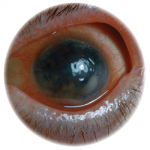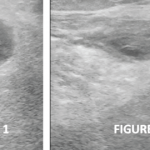The ACR and RheumPAC are working to secure an annual allocation of $20 million dedicated to research on arthritis prevention and treatment in the Congressionally Directed Medical Research Program budget.
Search results for: Primary care

Myositis-Specific Antibodies Identified
The idiopathic inflammatory myopathies (IIM) encompass eight categories: 1) dermatomyositis (DM) in adults, 2) juvenile dermatomyositis, 3) amyopathic DM, 4) cancer-associated DM, 5) polymyositis, 6) immune-mediated necrotizing myopathy, 7) inclusion body myositis, and 8) overlap myositis.1 These categories help classify the myopathies based on clinical and histologic features. The incidence of IIM is estimated at…

Achieving Clinical Documentation Improvement in 2020
Although the Centers for Medicare & Medicaid Services (CMS) is simplifying documentation through its Patients over Paperwork initiative, clinical documentation improvement (CDI) did not go away. CDI is not about how to code in ICD-10-CM or the Current Procedural Terminology (CPT); instead, it is a huge part of the solution in maximizing the integrity of…

Ankylosing Spondylitis & Uveitis: An Ophthalmologist’s Perspective
It’s often said the eyes are the window to the soul, and in the case of ankylosing spondylitis and other spondyloarthropathies, one can also say the eyes are the window to systemic disease. Although uveitis occurs in approximately 2–5% of patients with inflammatory bowel disease, 6–9% of patients with psoriatic arthritis and 25% of patients…

The 2019 ACR Award Winners & Distinguished Fellows
ATLANTA—Every year at its Annual Meeting, the ACR recognizes its members’ outstanding contributions to the field of rheumatology through an awards program. The ACR is proud to announce 20 award recipients for 2019, honored for their accomplishments as clinicians, instructors or researchers who have helped advance rheumatology, for their commitment to inspire others to enter…

FDA Approves Nintedanib for SSc-ILD, But Temper Your Expectations
The U.S. Food & Drug Administration (FDA) approved nintedanib for systemic sclerosis associated interstitial lung disease (SSc-ILD) on Sept. 6 after a randomized, controlled trial (SENSCIS) demonstrated significant benefit against placebo.1 At a cost of $96,000 per year, treatment reduced the adjusted annual rate of change in forced vital capacity (FVC) from –93.3 mL in…
New D.C. Office Strengthens ACR Advocacy Efforts
Three full-time, ACR advocacy staffers are now working in Washington, D.C., to provide a daily presence for national rheumatology lobbying efforts.

Anifrolumab Promising for SLE
Recent research has found a higher does of anifrolumab may benefit patients with moderate to severe SLE…
How to Navigate & Manage Insurance Overpayments
Insurance overpayments can occur in a practice for a variety of reasons. An insurer may simply make a mistake by paying a provider more than the contracted amount for a service or pay for a service that is not covered under the patient’s insurance plan. Whatever the reason, overpayments can and will create headaches for…

Ultrasound Aids Diagnosis of Man with Knee Pain & Swelling
A 56-year-old automobile mechanic was referred to our rheumatology service by his orthopedist to evaluate left posterior knee pain and swelling that had been present for three months. The patient had undergone bilateral total knee arthroplasties (TKAs) for sports-related osteoarthritis three years before. In addition to the knee pain, the patient described several years of…
- « Previous Page
- 1
- …
- 91
- 92
- 93
- 94
- 95
- …
- 139
- Next Page »